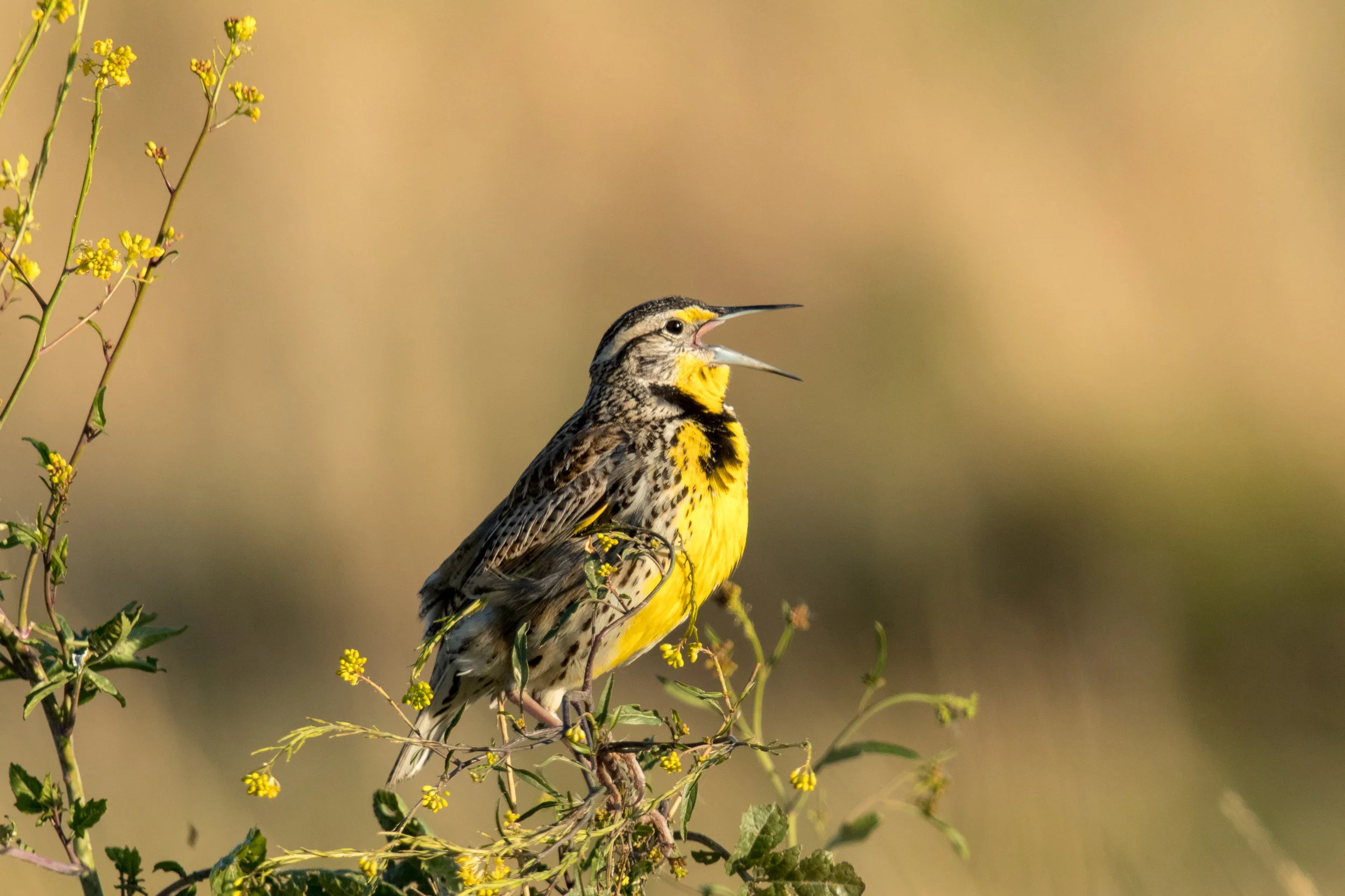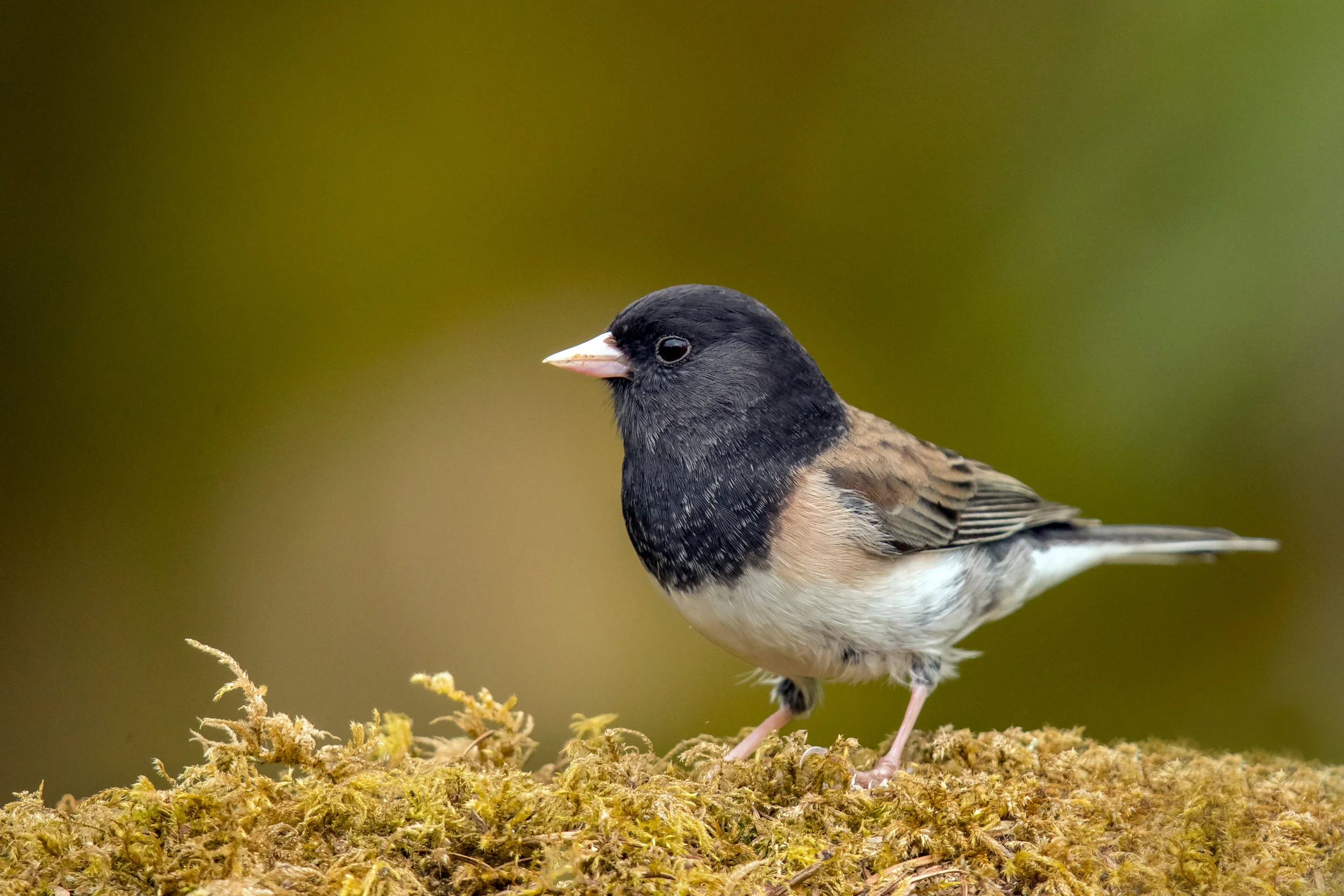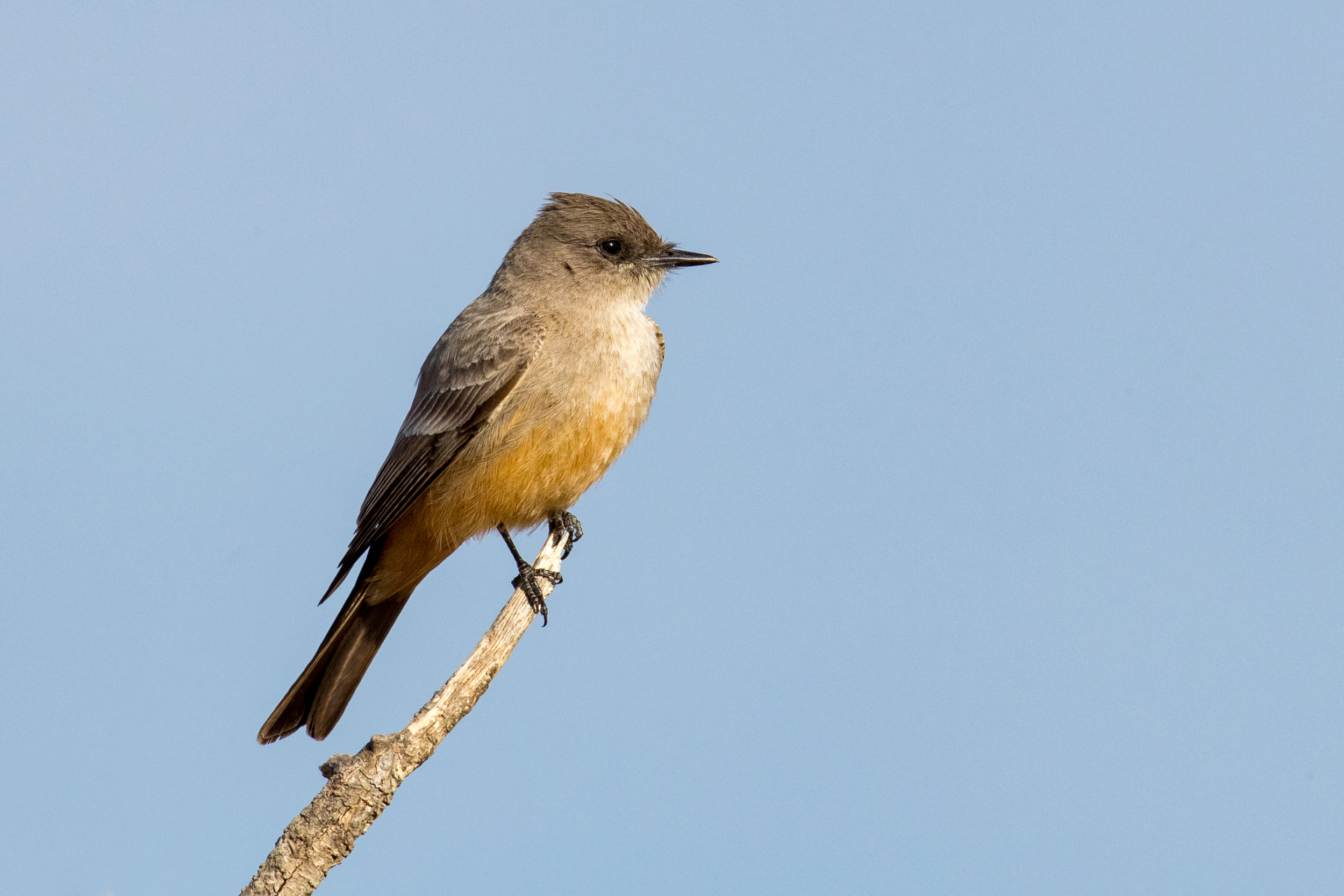A conspicuous bird of freshwater marshes, the Yellow-headed Blackbird breeds in eastern Washington.
Spotted Towhee
Bullock's Oriole
Barn Swallow
Western Kingbird
American Dipper
Western Meadowlark
The Western Meadowlark (WEME) is 9-1/2" long. The WEME has a yellow breast and belly with a black V-shaped breast band. Upper parts are dark brown with dusky edges. When the bird is flushed it shows a conspicuous patch of white on each side of a short tail and flies with several rapid wingbeats alternating with short glides.
Bushtit
Mountain Bluebird
The Mountain Bluebird, sometimes called the “prairie bluebird” (Dunne), is a bird of open grasslands. It is seen most frequently in Central and Eastern Washington. It enjoys a wide range of habitats including an altitudinal range from grasslands to open areas in forests, to alpine tundra (Alderfer).
Sage Thrasher
Pine Siskin
The genus name Carduelis (Card-dyou-EE-liss) is from the Latin carduus, thistle (eats seeds of thistle). The species name pinus (PINE-us) is Latin for pine which is its common name apparently from the siskin of Europe, a yellow-green finch. Siskin apparently is derived from Danish sidsken or Swedish siska, a “chirper.”
Dark-eyed Junco
Northern Rough-winged Swallow
Western Wood-pewee
A bird of open woodlands, the Western Wood-Pewee is widespread in the western United States as far east as the western side of the plains states. It is most often seen calling pee-er from an open branch from which it will also sally forth to catch a variety of insects including flies, bees, wasps, beetles, moths and bugs (Bemis & Rising).
Northern Shrike
Like a sentinel, as described by its species name excubitor, Latin for watchman or guard, the Northern Shrike surveys its territory from a low perch on a shrub or post. With precision it hunts using a direct flight toward its prey-a small rodent or another bird-and dispatches it quickly by “pounding its bill into the base or back of the skull and the using its hooked bill severing the spinal cord between the neck vertebrae as falcons do” (Sibley).






















